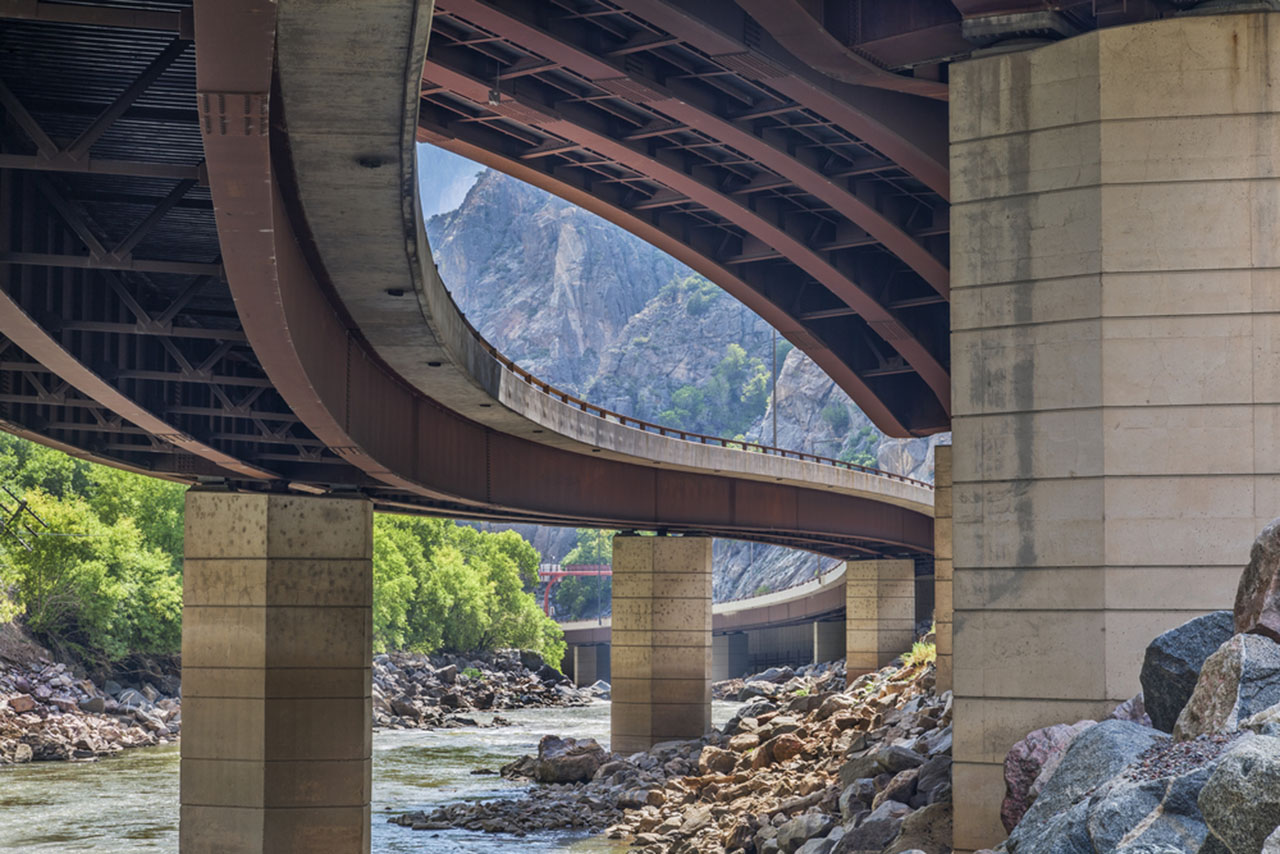The Local newsletter is your free, daily guide to life in Colorado. For locals, by locals.
On Feburary 15, a large rockfall occurred in Glenwood Canyon near the exit to Hanging Lake—about eight miles east of Glenwood Springs. Without any warning, a mass of boulders suddenly rumbled down the side of the canyon west of the Hanging Lake tunnel. Rocks the size of Volkswagen Beetles smashed into the interstate, damaging and partially blocking this important artery and crashing into a passing tractor-trailer truck.
Fortunately, no one was injured, but the rockslide has created a major headache for drivers and CDOT, which immediately closed I-70 due to safety concerns. Ten days after the incident, access to the interstate remained limited as crews slowly worked to remove 400 tons of rock from the site, build new barriers to stop future slides, and repair guardrails, retaining walls, and the road. Due to the ongoing mitigation work, CDOT has only opened the road to traffic in the evening, from 4 p.m. to 9 a.m., and even then, vehicles are restricted to a single lane. So drivers have been left with two unpleasant options: waiting for up to four hours to follow a pilot car through the lower canyon during the evening, or taking a four-hour detour via Craig and Steamboat Springs.

The road restrictions should ease on Thursday, as CDOT announced that one lane in each direction would be open starting at 4 p.m., and would remain open around the clock. But officials estimate that it could be another month until work on the road is complete.
Rockfalls are not unusual in Glenwood Canyon. So much rock is exposed atop its verical cliffs and steep slopes that it has been identified as one of the worst stretches for rockfall in the entire interstate highway system, according to the Colorado Geological Survey book, Messages in Stone. Despite the roughly $11 million spent in an attempt to protect this stretch of I-70, similar events in November 2004 and March 2010 also closed the interstate for several days and cost around $1.5 million each to repair.
All three rockfalls occurred in the Hanging Lake area, the deepest part of the canyon, where the base of the steep walls are composed of 1.7-billion-year-old rocks, including granite, that were created when the forces of plate tectonics roiled the region. Atop these ancient rocks is a layer of sandstone that is 500 million years old. This is the bottom of a layercake of sedimentary rocks that form the canyon’s gorgeous upper walls. The 1.2-billion-year-old gap in between the granite and the sandstone represents a long period when no sediment was accumulating in the area and, at least for a time, the granites and other granddaddy rocks were exposed to the ravages of nature. This weathering weakened the uppermost granite, creating many grooves and cracks where most of the rockfalls in Glenwood Canyon occur, according to Jonathan White, an emeritus Senior Engineering Geologist at the Colorado Geological Survey.
The largest and most damaging rockfalls, however, occur when large slabs of the 500-million-year-old sandstone peel off the vertical cliffs that rim the granite 1,000–2,000 feet above the roadway, White says. In those situations, the rock can drop vertically up to 500 feet, rapdily accelerating before bouncing down the remaining slope. White has not yet heard from CDOT which rock was the source of this landslide, but based upon its size and location, there’s a good chance that it started in the sandstone.
The tab for this month’s destruction is already estimated to be $2 to $5 million and repairs, with accompanying road closures, are likely to continue for some time. And once CDOT has stabilized this situation, they have many other areas of our mountainous state to watch, including the large DeBeque Canyon Landslide, a slow-moving slide that is creeping toward I-70 about 75 miles farther west.
—Photo courtesy of Shutterstock








